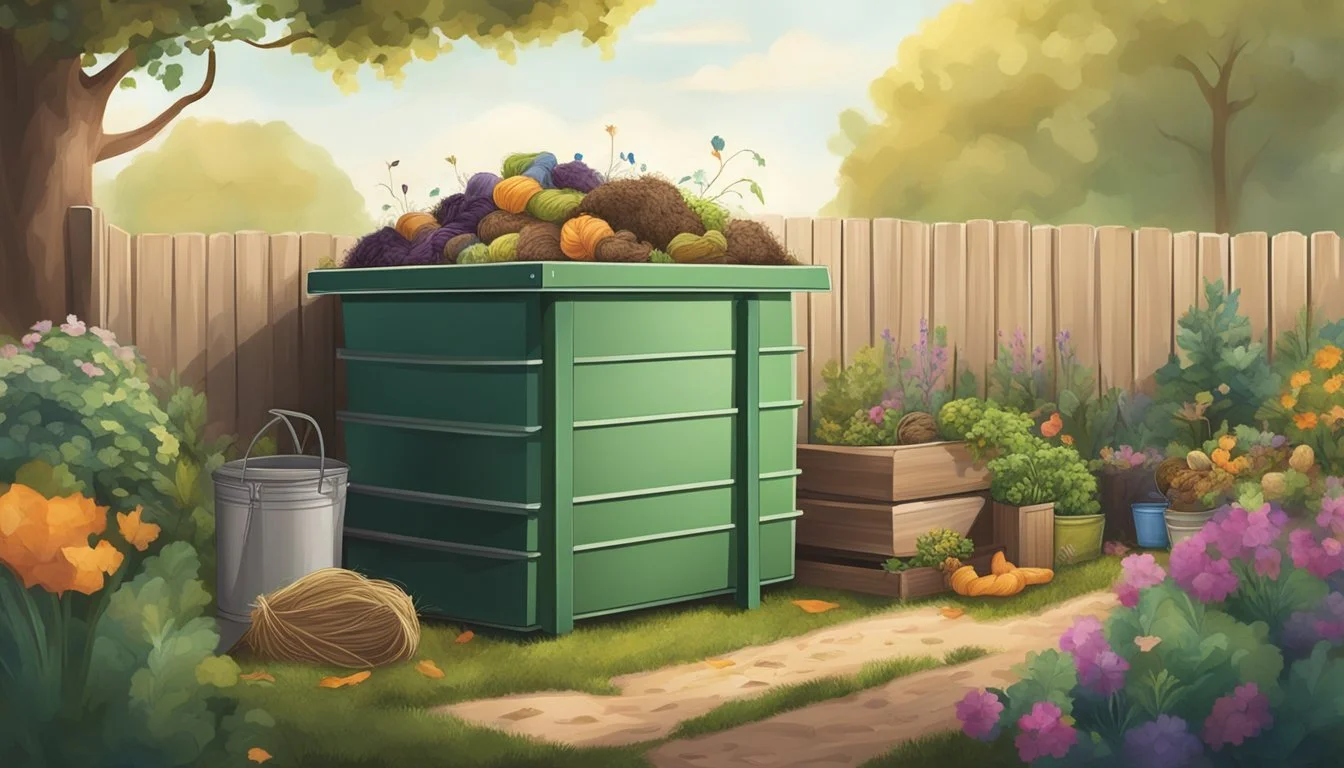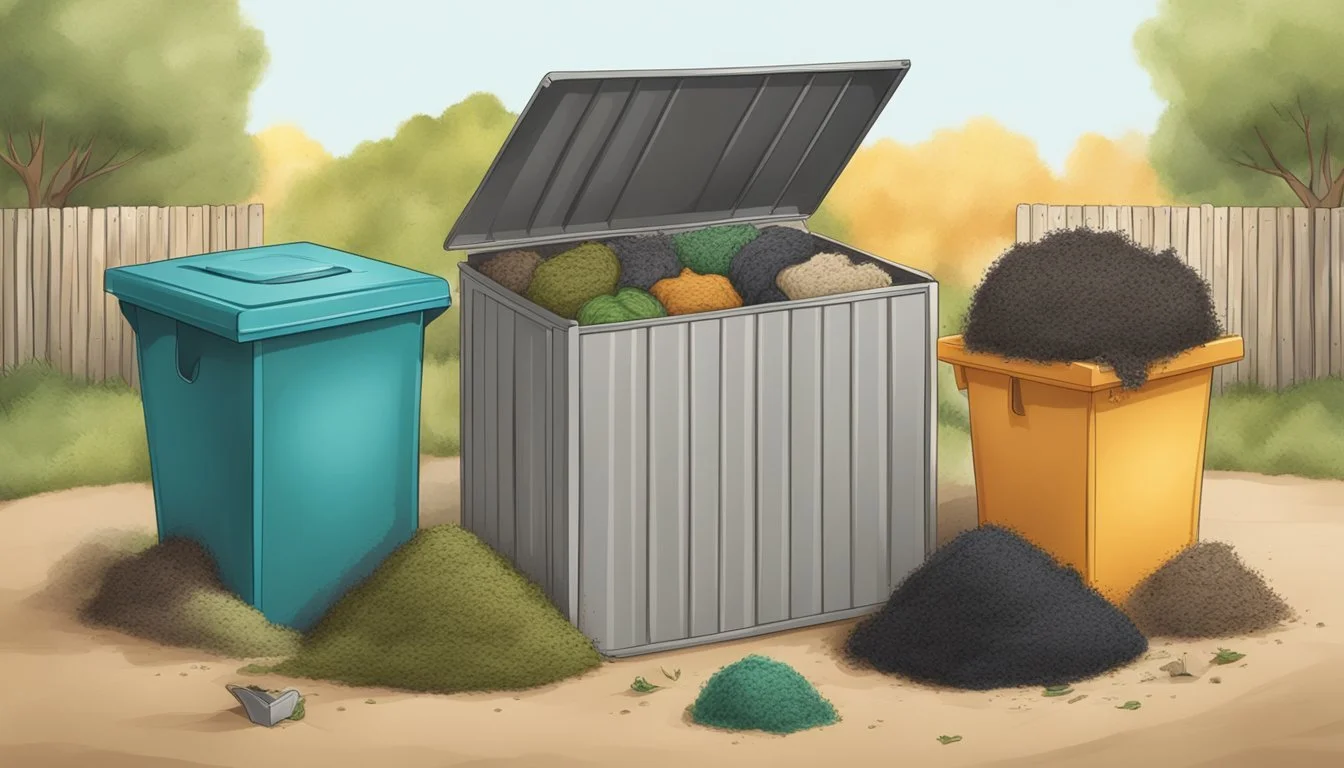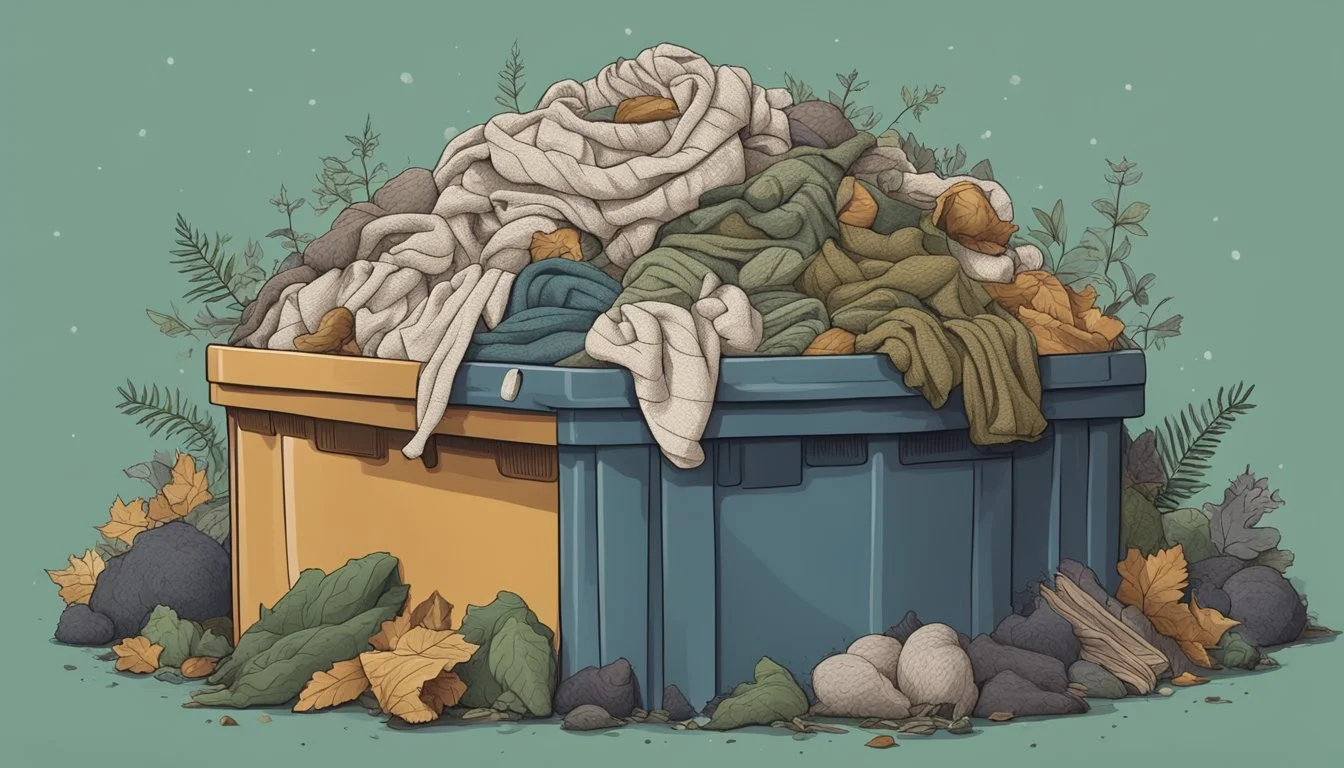Can You Compost Wool Sweaters?
Understanding Biodegradable Fabrics in Composting
When considering the disposal of old clothing, particularly wool sweaters, composting emerges as a sustainable method that resonates with environmentally conscious practices. Wool, being a natural fiber, lends itself well to the composting process. Traditional wool sweaters, not blended with synthetic fibers, can be broken down naturally over time, adding nutrient-rich content to compost heaps.
Composting wool sweaters is not only feasible but also beneficial as it contributes to the brown material needed in compost mixes, providing a source of carbon. However, it is essential to ascertain that the sweater is composed entirely of natural fibers, as the presence of synthetic materials disrupts the decomposition process. Cutting the wool into smaller pieces accelerates the breakdown, helping it integrate more seamlessly into the compost.
Managing a compost pile with wool involves regular maintenance, such as ensuring adequate moisture levels and turning the pile to aerate it. Natural fibers like wool require more time to decompose than other compostable items. Results vary based on the composting conditions, but ultimately, with patience and proper care, wool sweaters can return to the earth, enhancing soil quality.
Understanding Wool as a Compost Material
Wool's natural properties make it an excellent compost material compared to synthetics. As a natural fiber, it can break down and release beneficial nutrients into the soil.
Nature of Wool
Wool is a renewable resource harvested from sheep. It's composed of a protein called keratin, which is naturally biodegradable. Unlike materials derived from fossil fuels, wool is a natural product with characteristics beneficial to composting, such as its ability to retain moisture and slowly release nutrients into the soil.
Wool and Biodegradability
In the composting process, wool acts as a brown material, rich in nitrogen. The keratin in wool breaks down over time, enhancing the compost with nutrients. This biodegradability establishes wool as a compost-friendly alternative, aligning with other natural materials like cotton, hemp, and silk.
Wool vs. Synthetic Fibers
Contrasting wool with synthetic fibers such as polyester, nylon, and acrylic, which are not biodegradable, highlights wool's environmental edge:
Material Biodegradable Source Wool Yes Natural Cotton Yes Natural Hemp Yes Natural Silk Yes Natural Polyester No Synthetic Nylon No Synthetic Acrylic No Synthetic
Wool and other natural fibers can decompose within soil without leaving behind harmful residues, unlike synthetic materials. This distinction makes wool, and similar natural fibers, more suitable for composting and environmentally conscious disposal methods.
Composting Basics
Composting transforms organic waste into nutrient-rich soil additive, ideal for gardening. It relies on balancing green and brown materials to accelerate decomposition and enhance soil health.
Composting Principles
In composting, the goal is to create an environment that facilitates the breakdown of organic material into humus. This process requires a delicate balance of nitrogen (found in green materials like vegetables), which provides protein for the microbes, and carbon (found in brown materials such as dry leaves), which supplies energy. The ideal carbon to nitrogen ratio is about 30:1. Common composting practices include regular aeration to supply oxygen and maintaining the right moisture level, as both are critical for the survival of composting bacteria.
Stages of Decomposition
Decomposition in a compost bin typically unfolds in stages:
Initial Stage: Organic materials are broken down by mesophilic bacteria, which raise the temperature of the pile as they consume waste.
Thermophilic Stage: The increasing heat promotes the growth of thermophilic bacteria, which break down materials more aggressively.
Cooling and Maturation: Cooled compost allows for earthworms and other organisms to further decompose material and stabilize nutrient content.
During all stages, it's vital to ensure that the compost has enough aeration, moisture, and a good mix of green and brown materials.
Importance of Nitrogen and Carbon
Both nitrogen and carbon are essential:
Nitrogen: This element is a key component of amino acids, the building blocks of the proteins that microbes use to grow and reproduce. Too much nitrogen can lead to a smelly pile due to excess ammonia or methane.
Carbon: It provides an energy source for the compost microorganisms. Without enough carbon, the compost pile can become too damp, which slows down the decomposition process.
Balancing greens (like kitchen scraps) and browns (like shredded paper and raw wool) in your compost bin is crucial for creating valuable compost for enriching soil and garden health.
Wool in Home and Garden Composting
Composting wool sweaters can be an effective way to recycle natural fibers and enhance soil health in both home and garden settings. Wool acts as a source of nutrients for compost and can aid in soil moisture retention and temperature regulation.
Preparing Wool for Composting
Before adding wool to a compost pile, one must ensure it is free from synthetic blends, as natural wool decomposes while synthetics do not. The wool should be cleaned and shredded into smaller pieces to accelerate the breakdown process. Dyes and treatments can affect compost quality, hence only untreated, natural wool is recommended for composting.
The Role of Wool in Compost
Wool decomposes slowly in a compost pile, gradually releasing nitrogen and other vital trace elements over time. It functions similarly to manure, providing a consistent, slow supply of nutrients. Wool's fibrous nature allows it to create air pockets within the compost, which is crucial for aerobic decomposition.
Benefits for Soil and Plants
When incorporated into soil as mulch or worked into compost, wool has multiple benefits:
Nutrient Contribution: It provides essential nutrients such as nitrogen, which is fundamental for healthy plant growth.
Moisture Retention: Wool retains water effectively, reducing the need for frequent watering and keeping roots fresher for longer.
Temperature Insulation: The fiber acts as an insulator, protecting plant roots from extreme temperatures.
Weed Suppression: A layer of wool can help suppress weed growth, reducing garden maintenance efforts.
Environmental Impact: Using wool in composting is a sustainable practice that promotes a healthier environment by repurposing organic material and reducing waste.
Incorporating wool into compost and as mulch can enrich garden earth and soil structure, support robust fruit and plant growth, and contribute to sustainable gardening practices.
Eco-Friendly Aspects of Wool Composting
Composting wool sweaters is a prime example of promoting sustainability through waste reduction and resource reuse. The practice not only diverts wool from landfills but also harnesses its inherent properties to benefit environmental health.
Reducing Waste and Landfill
When wool garments are composted instead of discarded, they help reduce the amount of waste sent to landfills. Natural wool fibers biodegrade, transforming into valuable compost over time. This process helps to minimize the ecological footprint by upcycling a renewable resource and supporting waste management efforts.
Wool as a Sustainable Resource
Wool is a sustainable and renewable fiber with several environmentally friendly traits. As it decomposes, wool enriches the soil with nitrogen, a vital nutrient for plant growth. Given wool's natural durability, it also provides a slow-release of nutrients, enhancing the quality of the compost. The use of wool in composting underscores the material's cycle from a renewable resource to an eco-friendly product.
Promoting Eco-Friendly Practices
Incorporating wool into composting sets a precedent for responsible consumption. It advocates for eco-friendly practices such as recycling and upcycling, furthering education on sustainability. The approach demonstrates how societies can shift towards more environmentally conscious waste management, emphasizing the importance of reusing materials in a manner that benefits the Earth.
Practical Considerations and Challenges
When composting wool sweaters, there are numerous factors to consider that ensure the process is effective and environmentally friendly. This section will explore the common hurdles one might encounter, strategies for avoiding pests and disease in compost piles, and the issue of non-compostable components that often accompany wool garments.
Common Challenges with Wool Composting
Wool sweaters can be composted as they are made from the hair of animals like sheep, goats, and alpacas. These natural fibers break down over time, contributing nitrogen and other trace elements to the compost. However, the process is not without its challenges:
Rate of Decomposition: Wool fibers are durable and decompose slowly. Cutting sweaters into small pieces can expedite the process.
Stained or Treated Fabrics: Wool that has been heavily stained or chemically treated may not be suitable for composting as it could introduce harmful substances into the compost.
Avoiding Pests and Disease
To maintain a healthy compost bin and prevent the attraction of pests like slugs and snails, consider the following:
Balance Your Compost: Ensure a good mix of 'greens' like grass clippings and 'browns' to create an environment less inviting to pests.
Proper Placement: Locate your compost bin away from areas where pests are prevalent, and consider using a bin with a secure lid.
Non-Compostable Components in Wool Products
Many wool sweaters contain elements that are not suitable for composting. These include:
Synthetic Blends: Wool that is blended with synthetic fibers like plastics will not break down effectively in the compost.
Non-Fiber Additions: Items such as buttons, zippers, and labels are often made from non-biodegradable materials like leather or plastic and should be removed prior to composting.
By addressing these practical considerations and challenges, you can successfully compost wool sweaters and contribute to a more sustainable practice.
Wool Alternatives and Synthetics
When considering the disposal of woolen sweaters through composting, it's important to distinguish between natural and synthetic materials as they have different environmental footprints and decomposing abilities.
Composting Natural vs. Synthetic Clothing
Natural fibers like wool, cotton, hemp, silk, and linen are generally compostable because they break down into organic matter. Microorganisms in the compost bin can process these natural materials, albeit at different rates due to their varying durability. Wool and cotton are excellent examples of natural, renewable, and eco-friendly fibers:
Wool: Highly compostable but decomposes slowly.
Cotton: More readily compostable than wool but may take some time.
In contrast, synthetic fibers such as polyester and nylon do not break down easily in a compost environment due to their plastic-based composition. They are not typically considered sustainable or eco-friendly as their degradation process releases microplastics into the environment.
Environmental Impact of Different Fibers
The environmental impact of different fibers must be scrutinized to understand their long-term effects:
Natural Fibers: Generally have a lower impact due to their ability to decompose and reintegrate with the earth. They are seen as more sustainable:
Wool: Renewable but with concerns over animal welfare and methane emissions.
Cotton: Requires significant water during cultivation but is biodegradable.
Hemp and Silk: Less water-intensive and biodegradable.
Synthetic Fibers: Carry a heavier environmental toll:
Polyester and Nylon: Made from non-renewable resources, contribute to microplastic pollution.
It is through understanding the distinctions between these materials that individuals can make informed decisions regarding the disposal of their clothing and the impacts on environmental sustainability.
Conclusion
Wool sweaters can be responsibly transitioned into compost, offering an eco-friendly end-of-life option for these garments. Composting is a sustainable method that returns wool's natural fibers back to the earth, enhancing soil health.
When composting wool, adherence to proper guidelines ensures efficient decomposition. Sweaters should be 100% wool and free of synthetic blends to be compostable. Prior to composting, removing non-biodegradable components, such as buttons and zippers, is crucial, as they contaminate the compost pile.
Shredding or cutting the wool into smaller pieces accelerates the process, as large chunks take longer to break down. Adding wool to a balanced compost pile that includes greens (nitrogen-rich materials) and browns (carbon-rich materials) supports the creation of nutrient-rich compost.
Wool's presence in a compost pile contributes insulation, retaining heat which aids in the decomposition of other organic materials. However, users should note that wool decomposition is slower than other organic materials due to its durability.
By composting wool sweaters, individuals contribute to a circular economy, reducing waste and promoting renewable resource use. It implicates a thoughtful approach to the lifecycle of textiles, emphasizing a reduced carbon footprint and conservation of natural resources.
Composting is a practical component of a sustainable wardrobe management, where wool's inherent eco-friendly properties are fully utilized. Thus, the practice supports ecological stewardship and signifies a step towards more sustainable living habits.








